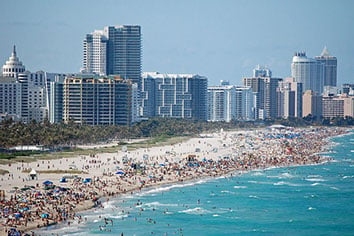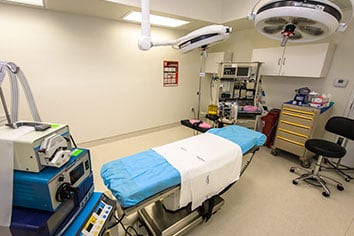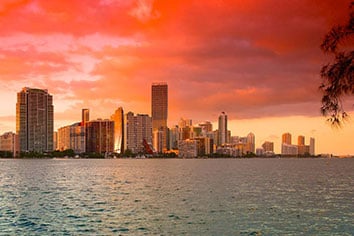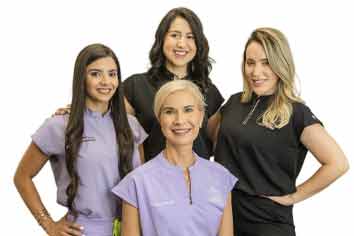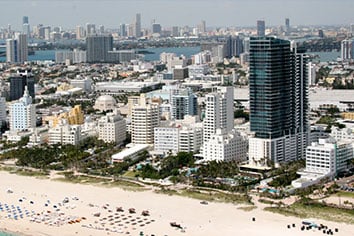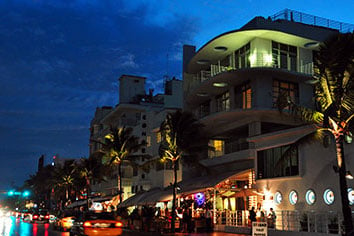Conveniently located to serve the areas of Miami and South Florida

Our faces are usually the first thing someone notices about us. It is how, without words, others know our inner monologue –whether we are thrilled or disappointed at news, whether we are annoyed or elated, and whether we are happy or sad.
This can be through the furrowing of an eyebrow, a huge smile, or even the flaring of the nostrils. These repetitive facial expressions leave small reminders on the face. These reminders along with sun bathing, smoking, and drinking alcohol over time will decrease facial elasticity, create fine lines and wrinkles, and roughen the texture of the skin.
As our facial skin is exposed to the elements more than any other skin on our bodies, it is important to take good care of it. Even when we do everything we can, sometimes the youthfulness of our faces can elude us. One way to regain our external youth, and create a lasting impression, is by creating more supple facial skin. Rhytidectomy, commonly known as having a facelift, might be a good choice for you.
Contents
What is a Facelift?
Rhytidectomy is the 5th most common form of cosmetic surgery, according to The American Society of Plastic Surgeons. Rhytidectomy is a cosmetic surgery that helps to restore sagging, loose skin to promote a more youthful appearance. A facelift can be performed three different ways: a traditional facelift, limited incision facelift, or neck lift. This procedure will increase youthfulness by tightening the skin. Many choose to have a facelift with a combination of an Eye Lift to reduce sagging skin on the upper eyelids, Botox to smooth out deep wrinkles in the forehead and around the eyes, Dermal fillers to replace fat loss in the face (generally in the cheek area), and Skin Rejuvenation and Resurfacing to even out the texture and diminish age spots and discoloration. During a personal consultation with Dr. Silvia Rotemberg, she will discuss if any of the above treatments are right for you.
As a top Miami plastic surgeon, Dr. Silvia Rotemberg, who is known for her personalized care, will perform a complete consultation, including an exam to determine your overall health, discuss your concerns, and determine if undergoing a facelift is right or whether an alternative to the surgery might be the right choice for you.
Candidates For Facelift Surgery
- Sagging skin around your nose, forehead, and jawline
- Deep creases around the lower eyelids and corners of the mouth
- Decrease in facial fat
- Appearance of a double chin
Types
Traditional Facelift
The most common type of facelift is called the traditional facelift. The traditional facelift begins with a slight incision at the temple and continues behind the ear to the lower scalp. For some this may include an incision at the neckline to reduce the appearance of a double chin and sagging jowls. The muscles may be lifted, fat resculpted, the skin is freshly draped, and sagging skin is trimmed off.
This type of facelift yields the most dramatic results. The patient will regain a youthful appearance, tightened skin, and less wrinkles.
Limited Incision Facelift
An option to the traditional facelift, is a Limited Incision Facelift. This procedure has a shorter incision that does not continue around the entire face (many times ending at the top of the upper lip). This procedure will, as the traditional facelift will work with drifting muscles, resculpture facial fat, and trim off excess skin.
This type of facelift will result in strong results above the lips, and is ideal for candidates who do not have sagging jowls or excessive lines around the mouth.
Neck lift
Another form of a facelift is the procedure of the Neck Lift. This procedure will start an incision around the neckline to around the ear. This is meant mainly for lower facial and neck issues such as sagging jowls and double chins.
Alternatives
It is known that a facelift is the most effective way to regain to a youthful look. However, since not all people are candidates for the surgery either for health reasons, or because the patient’s skin will not cooperate with a facelift, here are alternatives:
Botox
Botox Injection (botulinum toxin) is a cosmetic procedure to help reduce the fine lines, wrinkles, crow’s feet, and creases in the skin. Botox works by immobilizing the muscle it is injected into. Botox injections are generally repeated every six months to a year. This will not reduce majors sagging of the skin.
Laser Therapy
Laser Therapy is a cosmetic procedure to help reduce the appearance of sagging skin and fine lines and wrinkles. This procedure can require multiple visits to the doctor to receive optimal results. Laser therapy will not reduce major sagging of the skin or deep lines.
Microcurrent Therapy
Microcurrent Therapy is a cosmetic procedure that uses electric current to stimulate the collagen in the skin, reduce muscle sagging, reduce fine lines and wrinkles, and tighten the skin. This procedure can require multiple visits to receive optimal results. Microcurrent therapy will not reduce major sagging of the skin or deep creases.
Eyelift Surgery
Sometimes, all that is needed is a lift around the eyes. If the eye skin is drooping or sagging down, this alternative to a full facelift, can give the appearance to younger skin, especially if the lower part of the face is still firm. Eyelift surgery will reduce fine lines and wrinkles around the eyes, remove excess skin, and give a more youthful appearance to the eyes and the rest of the face.
Brow Lift Surgery
Brow lift surgery can remove furrowing eyebrows, lift the skin around above the eyelids, so that the eyes seem brighter. This alternative to facelift and eyelift, is ideal for candidates who do not have drooping eyelids or sagging jowls, but rather whose skin around their brow line appears heavy.
What To Expect During The Consultation
Dr. Silvia Rotemberg believes in a collaborative process in which the patient understands all options, and both doctor and patient make decisions for the right course of action. She will then review with you what to expect from the procedure, as well as, how to best prepare yourself during the days leading up to and the days and weeks after the surgery.
During the consultation, the doctor will examine your facial structure, muscle strength, and overall appearance of your facial skin. She will discuss the intricacies of the procedure, your expectations, what can be accomplished, and if a facelift or one its alternatives is the right course for you. You should bring pictures when you were a few years younger, so that the doctor is able to make a well-rounded and informed decision for your specific needs and desired results.
Procedure
To get a better understanding of how what to expect you should know what will occur during the facelift procedure. A facelift surgical procedure can take from two to four hours, and depending on the extent of surgery, sedatives can be a combination of mild sedatives and local anesthesia or general anesthesia.
Dr. Silvia Rotemberg’s surgical artistry informs her choice of the ideal place for incision in the area of your skin that naturally creases, so that scarring is minimal and not noticeable. The incision itself generally requires no hair shaving (in order to ensure a prompt appearance of recovery), and depending on the needs of the patient she will close the incision with extra fine sutures and/or metal clips. After surgery, the doctor will apply a dressing to protect the areas of incision.
Most patients are sent home the same day after surgery.
Recovery
Dr. Silvia Rotemberg’s hands-on approach to recovery is to have an open door policy with each patient. She and her qualified staff have a warm and welcoming approach from consultation to recovery. You will be able to consult with the office with any questions. Her office wants each patient to understand that any concern of yours, is a concern of theirs.
The recovery process for a facelift procedure will depend on each patient, however, the general rule is that you will be able to return to work in two weeks. The doctor has a specific and detailed recovery plan for each patient, and it should be followed as recommended for optimal results.
While in recovery, you should expect to be bruised and swollen, to limit physical activity, and to follow all of the doctor’s instructions. You will want to help reduce swelling by elevating the face and the use of ice packs. Avoid aspirin and alcohol in the week after surgery, so that you do not thin your blood and increase bruising. Within a week of surgery, you will return to Dr. Silvia Rotemberg’s office for a follow-up appointment to ensure that you are healing properly. As each person heals differently, the doctor will give you additional recommendations to heal quickly.





